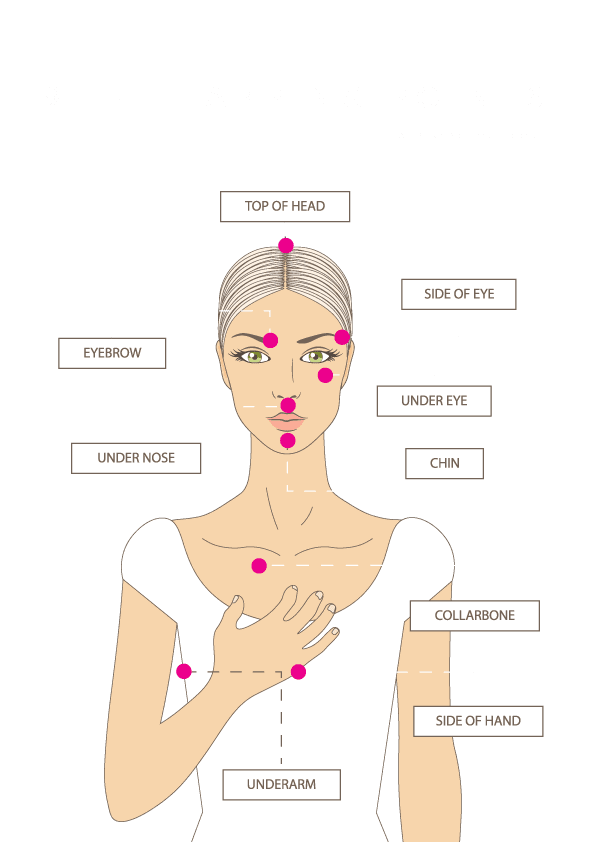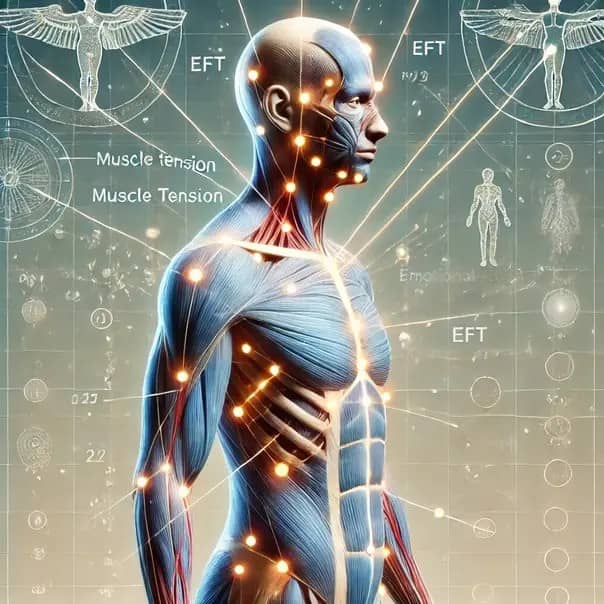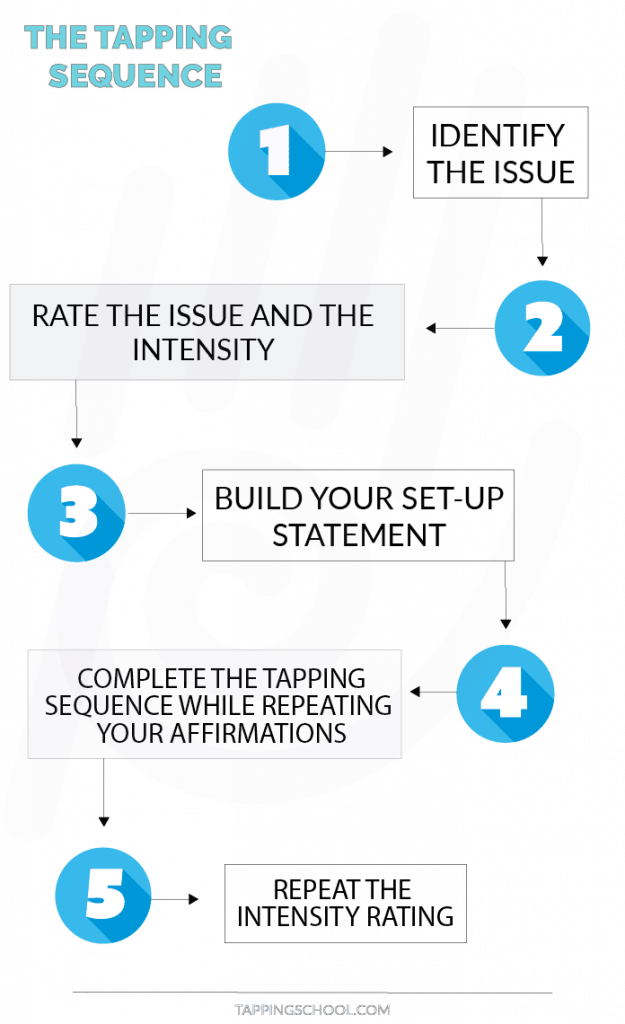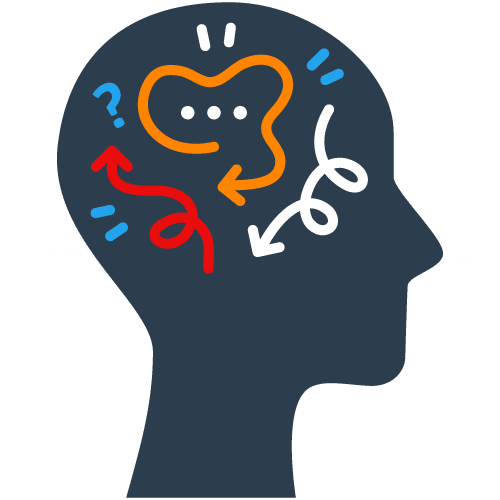
9 EFT Tapping Points: A Practical Guide for Emotional Relief
Many people want a simple way to lower stress, ease anxiety or reduce unhelpful thoughts. One approach that combines Psychology with traditional Chinese medicine is called Emotional Freedom Technique or EFT. At its core, it involves EFT tapping points. These points are linked to meridian points in the body. When you tap them while thinking about a personal concern, you may feel less tension and more calm. This article explains each major tapping spot, how they connect to energy flows and why so many find tapping works for mental and emotional relief. Here, you’ll learn how to include EFT in your life without extra fuss. If you’ve been curious about why people tap part of the body like the top of the head or the karate chop point, you’ll find clear answers and easy steps to follow.
Curious how this ties into the full EFT process? See our comprehensive guide.

We will start by mapping the EFT tapping points in detail. Next, we’ll discuss how these points connect to your body’s small intestine meridian and other channels that help energy move freely. We’ll then walk through a simple routine for identifying the issue, tapping the right spots and promoting self-acceptance. The aim is to offer a hands-on guide that benefits both beginners and long-time users of emotional freedom technique (EFT). By the end, you’ll see how these steps can ease concerns such as worry, self-doubt, or even stress tied to past events, including certain post traumatic stress disorder symptoms.
Why Focus on EFT Tapping Points?
EFT, also called emotional freedom technique, directs attention to tapping on specific points of the body. Practitioners trace this idea back to traditional Chinese medicine, which teaches that energy moves along meridians. Think of these meridians like pathways that carry life force. When they’re clear, emotions tend to stay in balance. When they’re clogged, you might feel on edge or stuck.
These tapping points often include:
- Karate Chop Point: Found on the side of the hand, where you might strike a board in martial arts.
- Top of the Head: Centered on the highest spot of your scalp.
- Eyebrow Point: At the inner edge of your eyebrow, just above the nose.
- Side of the Eye: At the bone on the outer corner of the eye.
- Under the Eye: Just below the pupil, above the cheekbone.
- Under the Nose: Between your nose and upper lip.
- Chin Point: In the slight dip between your lower lip and chin.
- Collarbone Point: Under your collarbone, a bit next to your sternum.
- Under the Arm: A few inches below your armpit, on the side of the body.

People tap these locations because each spot ties to a meridian point that may shift how the mind and body process stress. Some find it odd at first, but many report feeling calmer after a few minutes.

How Tapping Works with Energy Flows
Imagine your body as a circuit. When the circuit is complete, everything is lit up and runs smoothly. But if there’s a break or short, the flow gets disrupted. That’s how some describe the effect of emotional stress. You may feel heavy, be at unease, or experience racing thoughts.
on EFT tapping points can help re-establish that flow. The karate chop point is linked to the small intestine meridian. Tapping here while stating “I deeply and completely accept myself” helps you address self-judgment. Meanwhile, tapping on the top of the head may help calm a racing mind because multiple meridians meet in that area. If you’re unsure, ask yourself: “Do I feel lighter when I tap?” Often, the answer is yes, which is why so many believe tapping works
Identifying the Issue: The First Key Step
Before you start tapping, you need to name the concern you want to target. This is called identifying the issue. It might be a fear of speaking up at work, or setting boundaries with a close family or friend. Ask yourself what the biggest stressor for youis right now. Aim to be as clear as possible.
For example, let’s say your concern is panic before a big presentation. Keep that event in mind as you tap. Repeat a simple statement like, “Even though I’m nervous about this talk, I deeply and completely accept myself.” This phrase is short, direct, and leaves no room for second-guessing.
“Even though I’m nervous about this talk, I deeply and completely accept myself.”
The Basic Tapping Sequence
- Setup Statement
- Tap on the karate chop point.
- Say something like, “Even though I feel nervous about this talk, I deeply and completely accept myself.”
- Repeat this line at least three times, focusing on the feeling.
- Move Through the Main Points
- Eyebrow Point: “This nervousness about my talk.”
- Side of the Eye: “My legs feel shaky.”
- Under the Eye: “What if I forget my lines?”
- Under the Nose: “This pressure keeps building.”
- Chin Point: “I worry people will judge me.”
- Collarbone Point: “I can’t get rid of this fear.”
- Under the Arm: “I feel it in my stomach.”
- Top of the Head: “This deep concern about messing up.”
- Check Your Progress
- Pause and notice if you feel calmer.
- Rate your worry on a 0-10 scale. Has it dropped? If not, try another round.
Using phrases that match your real feelings keeps you engaged. Some people add, “I choose to feel calm,” once their tension level drops. This inserts a positive thought into the cycle.

Key Examples of How to Adjust Your Words
- If you struggle with self-criticism, say, “Even though I find fault in my work, I deeply and completely accept my efforts.”
- If you’re upset with a coworker, say, “Even though I feel frustrated, I deeply and completely accept my feelings.”
- If you’re sad about a missed chance, say, “Even though I’m disappointed, I deeply and completely accept my situation.”
These targeted phrases help you speak your truth. After all, it’s much easier to change a feeling when you’ve named it.

Does It Work for Stress Disorder PTSD?
Some have used EFT Tapping to help with post traumatic stress disorder. It’s not an instant fix, but the gentle tapping process may calm the body’s stress signals. If you experience this type of concern, consider seeking professional advice while you use EFT as a supportive tool. Many individuals find that tapping can soothe their thoughts when memories become overwhelming.
There is ongoing debate among professionals about the exact reason tapping helps. One idea is that focusing on an event while tapping reduces the “threat” signal in the brain, much like letting steam out of a pressure cooker. Others think it’s a mix of being aware of your thoughts and feeling as well as grounding.
Practical Tips for Success
Thought-Provoking Questions to Ponder
- What personal fears stop you from speaking up at work?
- Have you noticed times when your body reacts before your mind knows why?
- Could tapping for a few minutes daily shift your mood or outlook?
- Would it help to name deeper issues, such as regret or guilt, and tap on those?
Asking these questions can ignite curiosity. You might find that you hold tension in certain spots, like your shoulders or belly, whenever you think about a stressful event.
Balancing Technical Terms with Plain Talk
You’ll notice references to the small intestine meridian or traditional Chinese medicine. While these terms sound technical, you don’t need to memorise every detail to benefit from EFT. The key is steady practice. Tapping on areas like the upper lip (under the nose), the collarbone, or the side of the body can bring relief, even if you’re new to this method.
By mixing direct statements with tapping, you create a self-soothing loop. Your body feels the gentle taps. Your mind hears your focus on the problem. Over time, many individuals realize they can release heavy emotions in this way.
Frequently Seen Results
- Reduced Stress: People often report a lighter feeling afterward.
- Better Self-Acceptance: Tapping helps you see your own worth more clearly.
- Clearer Mind: By quieting anxious thoughts, you can plan and act with more ease.
- Better Sleep: Some try tapping right before bed to let go of worries.
These benefits vary, but the general pattern is positive. The goal is to interrupt negative cycles and remind the body and mind that they can relax.
Need to personalise your tapping? Try our EFT Script Generator.
Final Thoughts
EFT Tapping offers a direct way to address stuck emotions by tapping on EFT tapping points while speaking simple truths. It’s grounded in concepts from traditional Chinese medicine, linking meridian points to emotional well-being. By identifying the issue clearly and tapping on the right locations, you may lessen the grip of fear, shame, or sadness. You might also find relief from anxious responses tied to past events, including certain post traumatic stress triggers.
Give it a try. Pick a small concern, state it, and tap through the sequence. Notice if your body feels more relaxed. You may discover that short, daily sessions make a big difference in your mood and focus. After all, EFT doesn’t require specialised equipment or long training. It simply calls for a bit of time, a willingness to speak your feelings and gentle taps on specific points of your body.
If you want to explore more, seek guidance from qualified trainers or manuals that detail the full range of spots. But don’t wait for the “perfect moment.” A brief round of tapping can be done anywhere—before a meeting, during a break, or right after you wake up. You never know which round might help you drop stress and move forward with greater confidence.